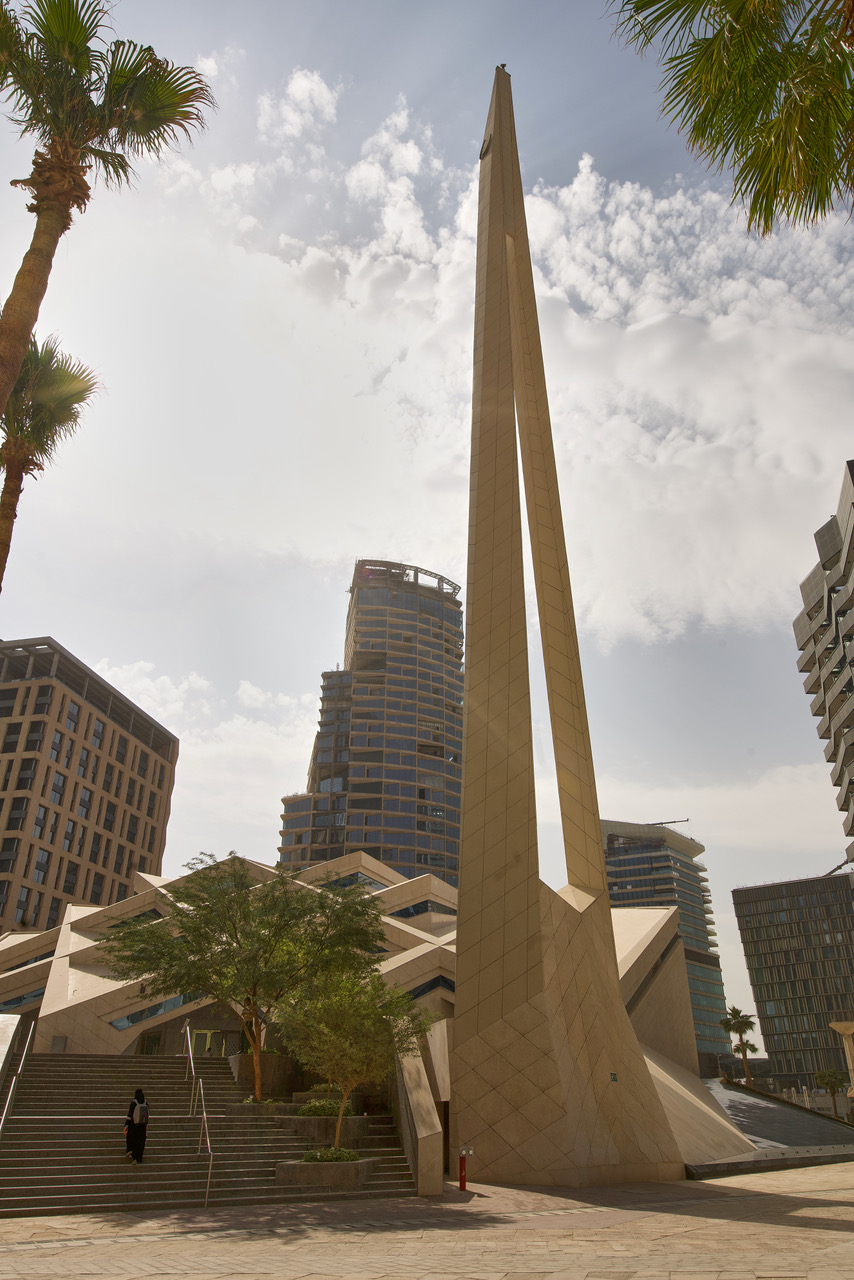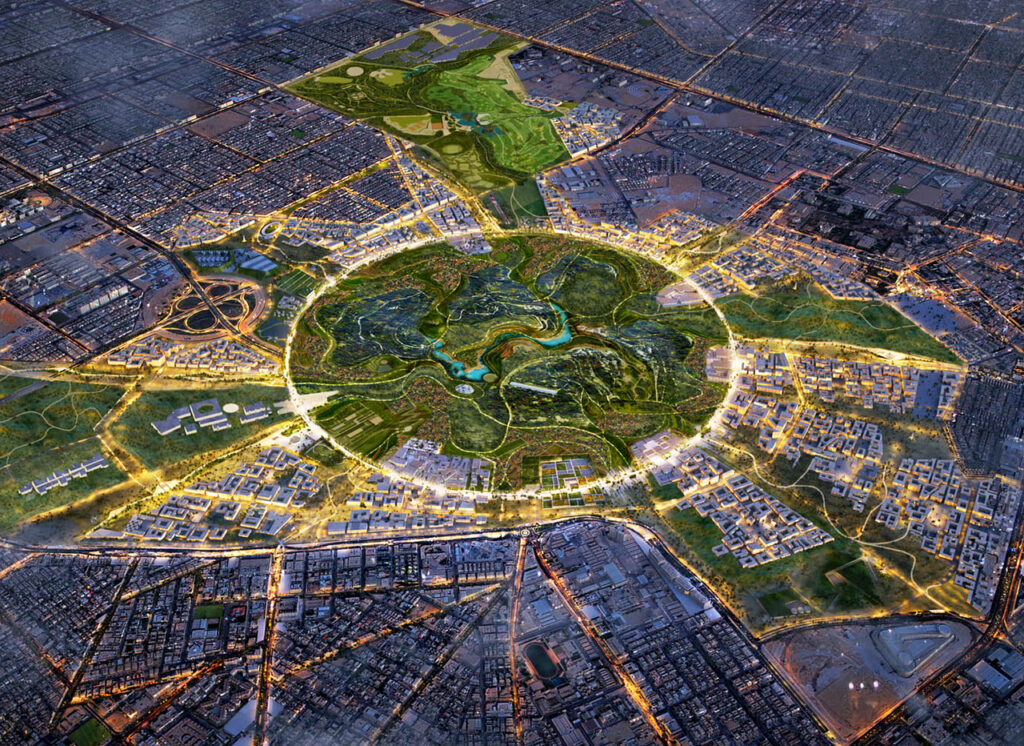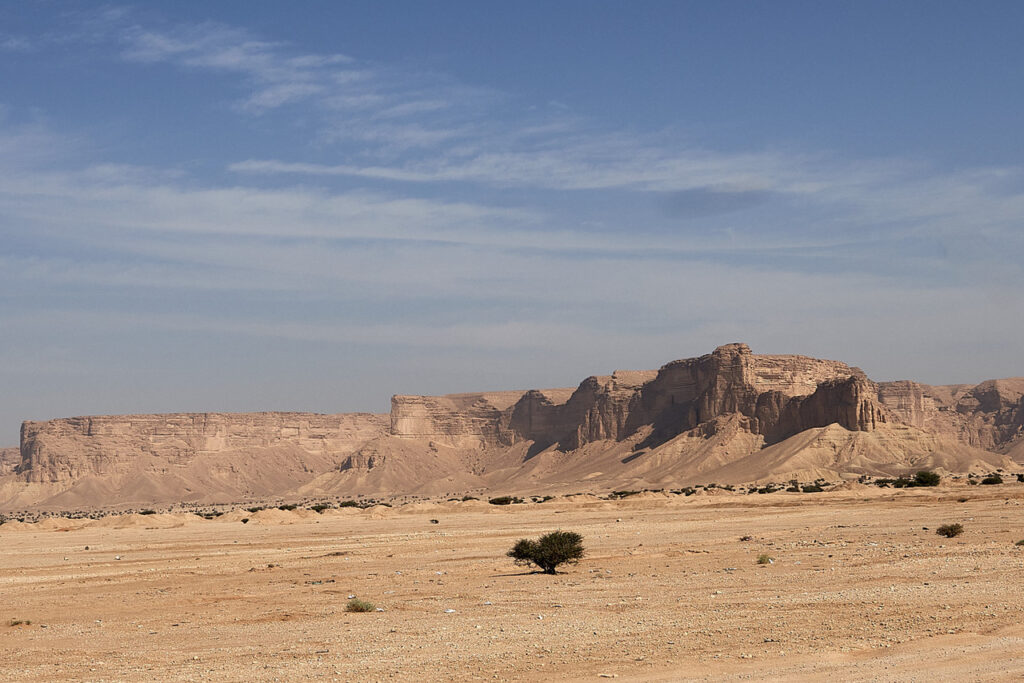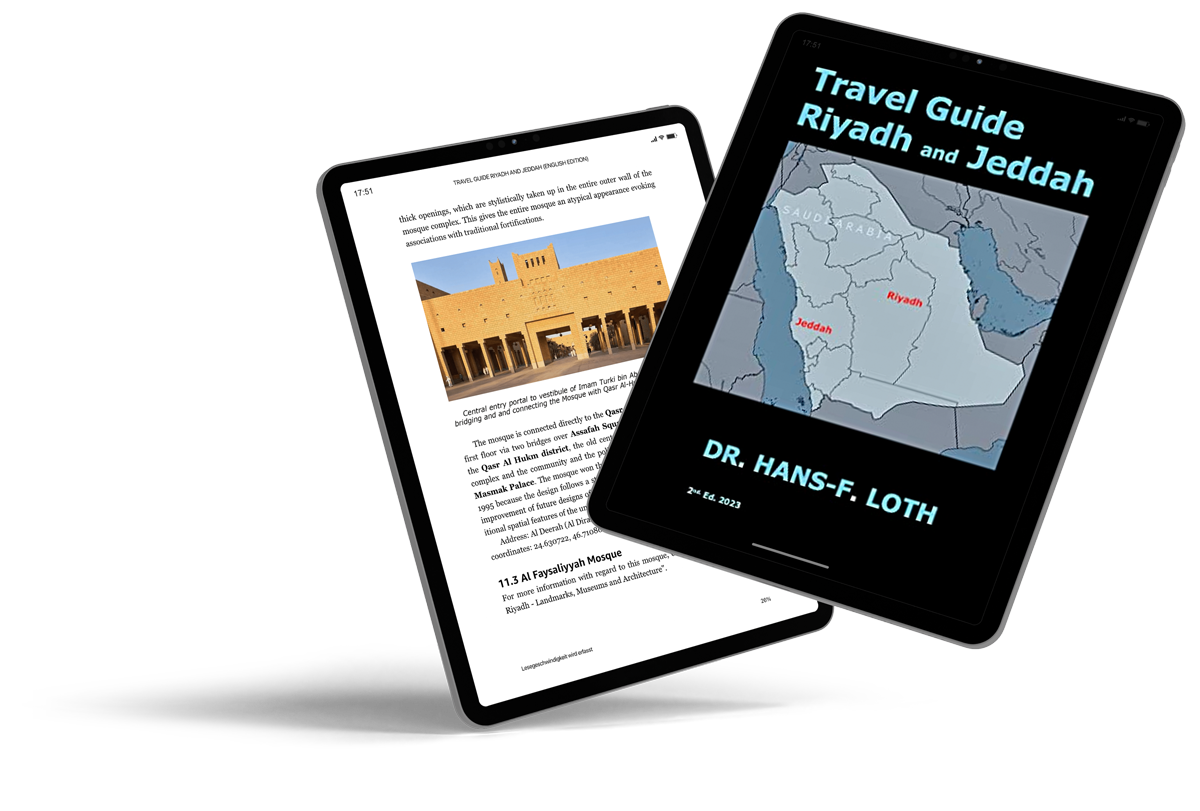City within the City
The King Abdullah Finance District (KAFD) is located in the northwest of the city. It’s previous goal was it to create a new financial district that will take the economy of Riyadh to new heights. In the meantime, this goal has changed slightly in that KAFD is now also intended to be a home for several tens of thousands of residents. In a sense, the district is a prototype of the future Riyadh. Developed within less than two decades from the desert soil adjacent to the city, this self-contained district demonstrates the country’s almost irrepressible will to actively shape the future of mankind. This district in particular also shows the incredibly rapid urban growth of the metropolis, which has one thing that most cities in the world lack: space, immense space …
Whereas the first high-rise buildings of the KAFD could only be seen, or better: glimpsed, as distant shadows in the middle of the desert from the sky bridge of the Kingdom Tower in 2013, the actual city and the KAFD have almost grown together again within a decade in 2023. King Fahd Rd, which connects the two areas, is already almost completely built up with office buildings on its western side; behind it, new development areas with private houses, residential buildings, commercial areas are expanding, which already come very close to the historic quarter of Ad Diriyah in the west. Between KAFD and Ad Diriyah are the large entertainment and amusement parks of Boulevard World and Boulevard Riyadh City.
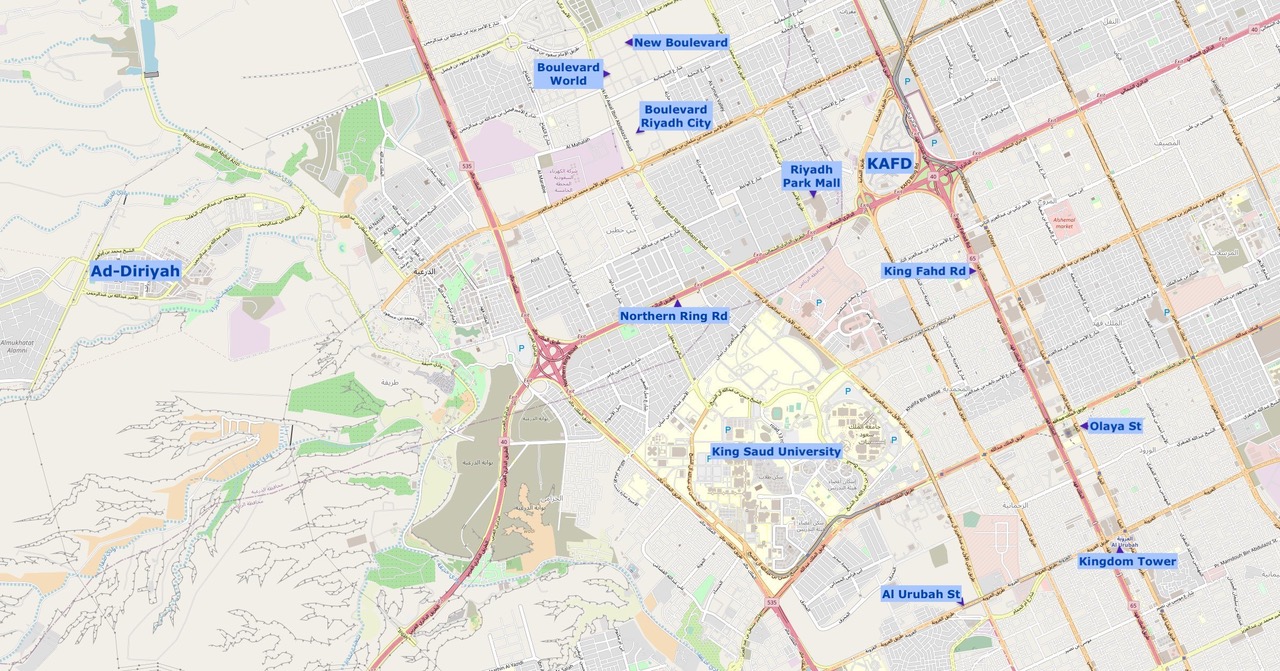
According to the master plan, the spatial arrangement of the buildings in the new district is based on the course of the alleys and the arrangement of the houses in the former capital of the Kingdom of Ad-Diriyah. In this historic city, the streets were oriented according to the prevailing winds, which supported the natural ventilation and cooling of the settlement. Accordingly, the positioning of KAFD buildings aims to optimally direct the desert wind and solar radiation through the neighbourhood, which should lead to a desired reduction in temperature and thus a more comfortable outdoor climate.
Award-Winning Architecture
Anyone visiting KAFD these days will be very impressed by the neighbourhood’s sometimes iconic architecture. There is no doubt that it is interesting as an urban space with its design and architecture, comprising among others the tallest skyscraper in Riyadh, at a height of 385 meters. KAFD provides a counterpoint to Riyadh’s previous skyline, which was characterised by the spine-line and the arrangement of the high-rise buildings of the Olaya district.
A state-of-the-art metro station is currently under construction for the King Abdullah Financial District. The station is located north of Northern Ring Road. KAFD will have connections to Metro lines 1, 4, and 6, as well as the KAFD monorail. Zaha Hadid Architects designed the metro station as one of four main stations in the metro network.
An automated monorail will connect the different parts of the KAFD with six stations, each 3.5 km away. In addition, numerous buildings (details vary) will be connected by an air-conditioned skywalk system (pedestrian bridges) that will provide access to the entire development. The pedestrian bridges will consist of individual geometric modules with twisted octagonal cross-sections that can be assembled in different lengths to easily adapt to the various building facades in the city.
KAFD Grand Mosque
In the midst of this development is the futuristic KAFD Grand Mosque, inspired by the abstract shape of a sand crystal.
It is indeed an architectural masterpiece that is hard to miss (for non-Muslims, unfortunately, only from the outside).
The column-free main part of the mosque including its abstract dome seems to rise from the earth, even burst out of it. Two arrow-shaped minarets of 60 m, tapering upwards and seemingly rising, contribute to an overall dynamic, lively impression. Located at the intersection of three pedestrian walkways and surrounded by skyscrapers, the mosque is a kind of center for people.
